Red soil mexico Cut Out Stock Images
 garden ground Stock Photohttps://www.alamy.com/image-license-details/?v=1https://www.alamy.com/stock-photo-garden-ground-144105178.html
garden ground Stock Photohttps://www.alamy.com/image-license-details/?v=1https://www.alamy.com/stock-photo-garden-ground-144105178.htmlRFJACFHE–garden ground
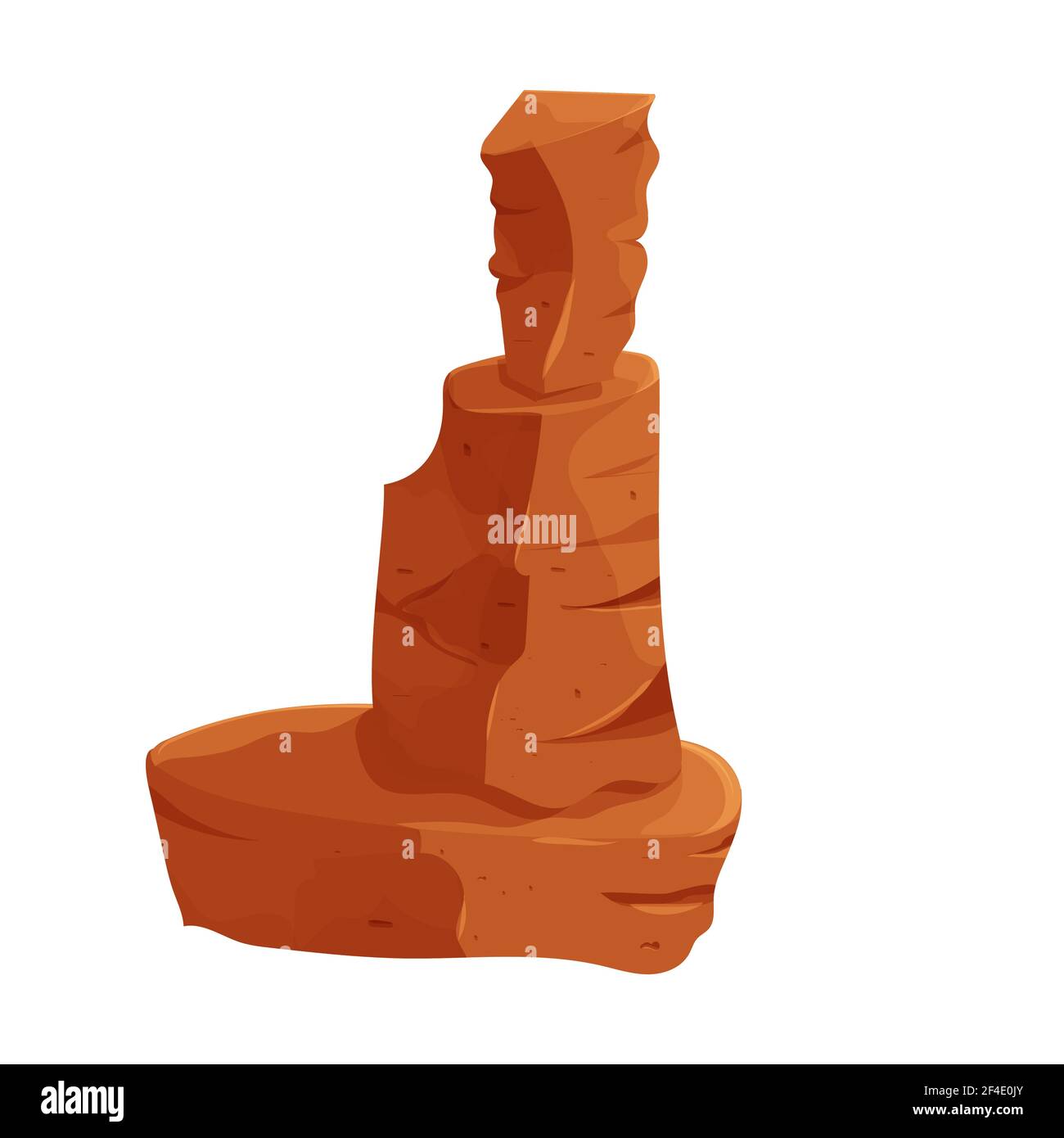 Dessert mountain, rock in cartoon style isolated on white background. Design element, ui game asset, decoration. Textured, cracked stone construction. Stock Vectorhttps://www.alamy.com/image-license-details/?v=1https://www.alamy.com/dessert-mountain-rock-in-cartoon-style-isolated-on-white-background-design-element-ui-game-asset-decoration-textured-cracked-stone-construction-image415815315.html
Dessert mountain, rock in cartoon style isolated on white background. Design element, ui game asset, decoration. Textured, cracked stone construction. Stock Vectorhttps://www.alamy.com/image-license-details/?v=1https://www.alamy.com/dessert-mountain-rock-in-cartoon-style-isolated-on-white-background-design-element-ui-game-asset-decoration-textured-cracked-stone-construction-image415815315.htmlRF2F4E0JY–Dessert mountain, rock in cartoon style isolated on white background. Design element, ui game asset, decoration. Textured, cracked stone construction.
 garden ground Stock Photohttps://www.alamy.com/image-license-details/?v=1https://www.alamy.com/stock-photo-garden-ground-144105170.html
garden ground Stock Photohttps://www.alamy.com/image-license-details/?v=1https://www.alamy.com/stock-photo-garden-ground-144105170.htmlRFJACFH6–garden ground
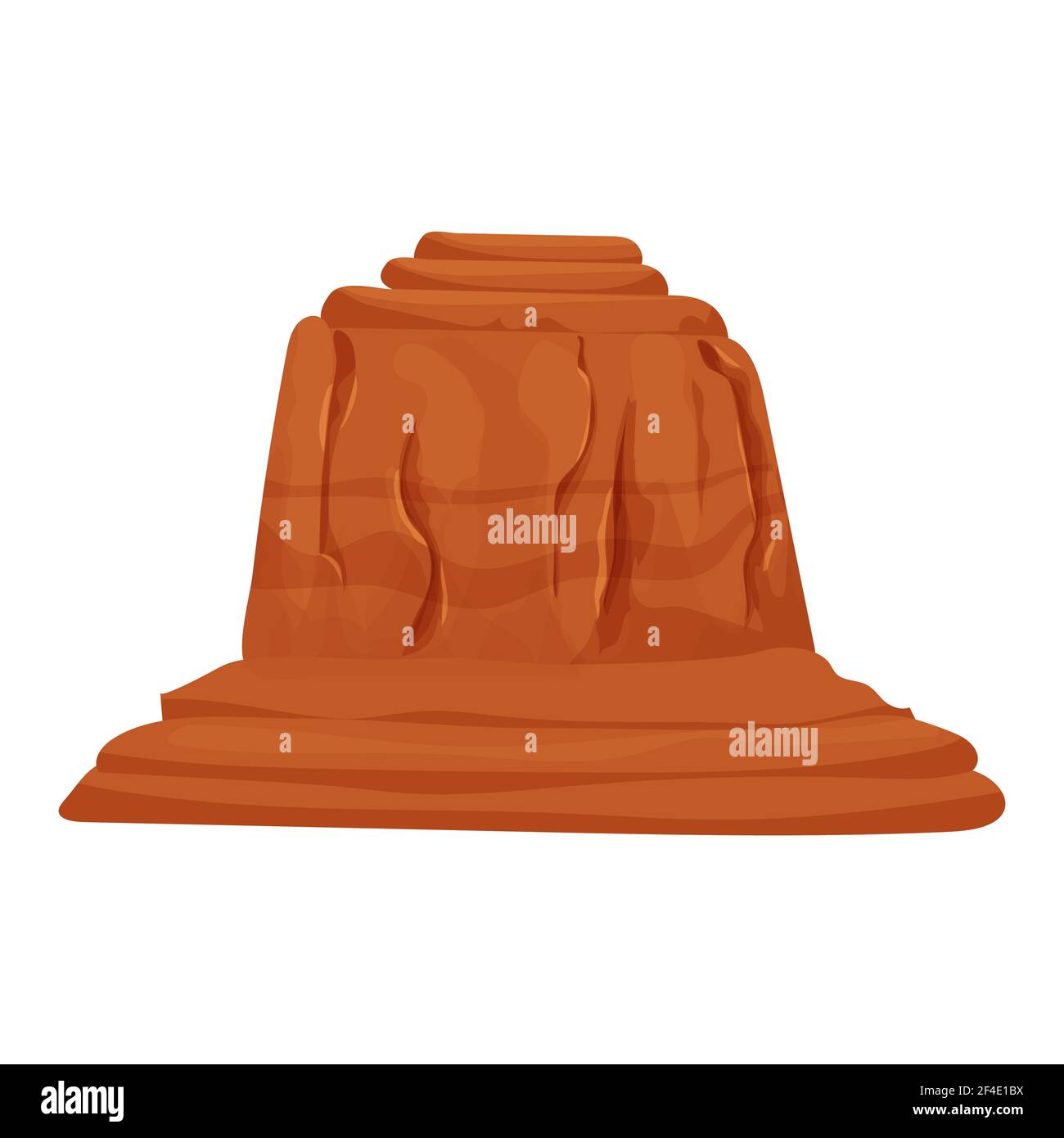 Dessert mountain, rock in cartoon style isolated on white background. Design element, ui game asset, decoration. Textured, cracked stone construction. Stock Vectorhttps://www.alamy.com/image-license-details/?v=1https://www.alamy.com/dessert-mountain-rock-in-cartoon-style-isolated-on-white-background-design-element-ui-game-asset-decoration-textured-cracked-stone-construction-image415815902.html
Dessert mountain, rock in cartoon style isolated on white background. Design element, ui game asset, decoration. Textured, cracked stone construction. Stock Vectorhttps://www.alamy.com/image-license-details/?v=1https://www.alamy.com/dessert-mountain-rock-in-cartoon-style-isolated-on-white-background-design-element-ui-game-asset-decoration-textured-cracked-stone-construction-image415815902.htmlRF2F4E1BX–Dessert mountain, rock in cartoon style isolated on white background. Design element, ui game asset, decoration. Textured, cracked stone construction.
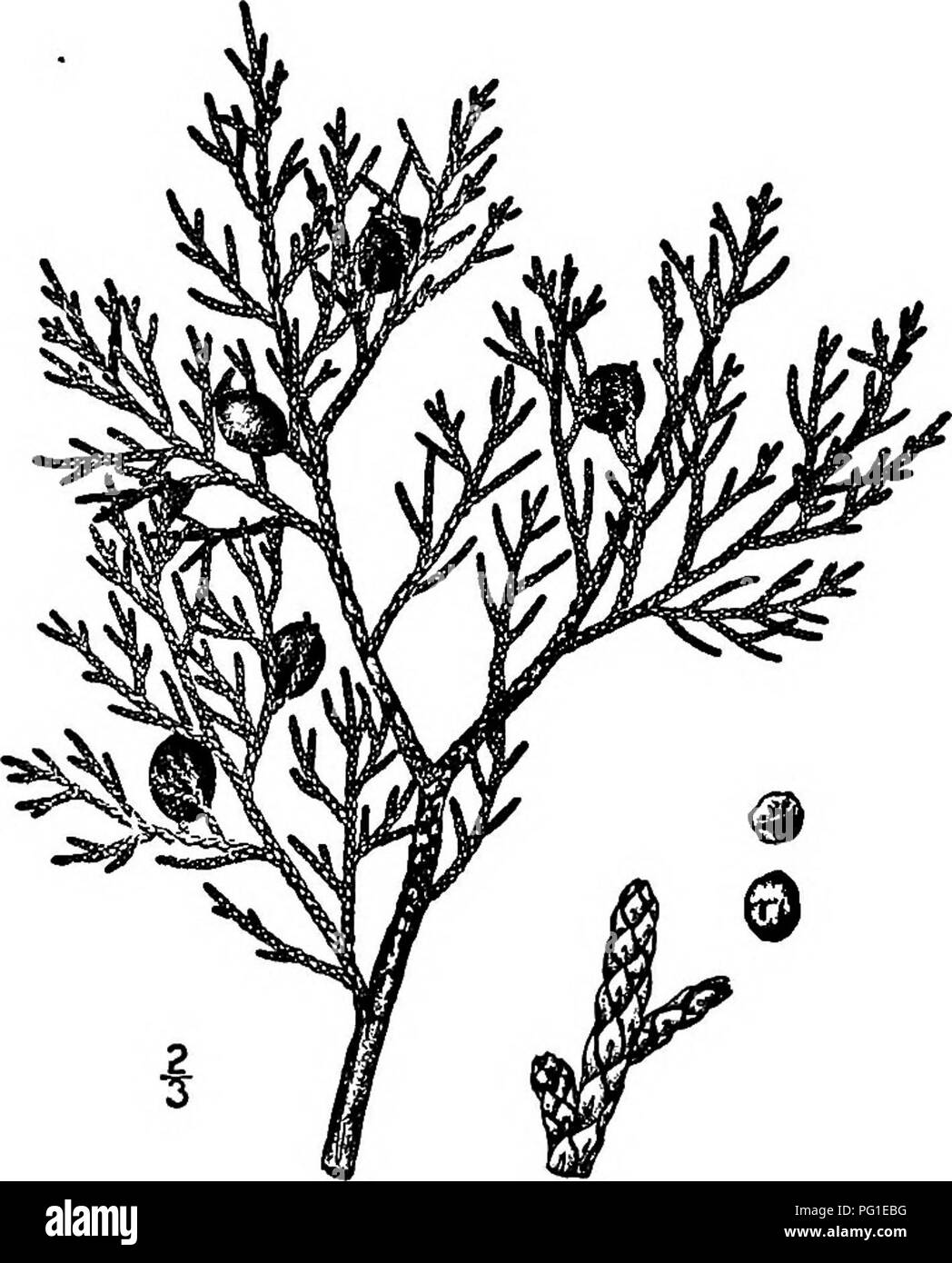 . North American trees : being descriptions and illustrations of the trees growing independently of cultivation in North America, north of Mexico and the West Indies . Trees. Utah Juniper III The wood is rather soft, close-grained, light brown with a slight tinge of red. It is only moderately durable in contact with the soil and is used locally for fence- posts and for fuel. Its habit of throwing up vigorous sprouts from the stumps after being repeatedly killed to the ground by fire should make it very valuable in the forestry operations of desert regions. Where it grows it is associated with Stock Photohttps://www.alamy.com/image-license-details/?v=1https://www.alamy.com/north-american-trees-being-descriptions-and-illustrations-of-the-trees-growing-independently-of-cultivation-in-north-america-north-of-mexico-and-the-west-indies-trees-utah-juniper-iii-the-wood-is-rather-soft-close-grained-light-brown-with-a-slight-tinge-of-red-it-is-only-moderately-durable-in-contact-with-the-soil-and-is-used-locally-for-fence-posts-and-for-fuel-its-habit-of-throwing-up-vigorous-sprouts-from-the-stumps-after-being-repeatedly-killed-to-the-ground-by-fire-should-make-it-very-valuable-in-the-forestry-operations-of-desert-regions-where-it-grows-it-is-associated-with-image216392164.html
. North American trees : being descriptions and illustrations of the trees growing independently of cultivation in North America, north of Mexico and the West Indies . Trees. Utah Juniper III The wood is rather soft, close-grained, light brown with a slight tinge of red. It is only moderately durable in contact with the soil and is used locally for fence- posts and for fuel. Its habit of throwing up vigorous sprouts from the stumps after being repeatedly killed to the ground by fire should make it very valuable in the forestry operations of desert regions. Where it grows it is associated with Stock Photohttps://www.alamy.com/image-license-details/?v=1https://www.alamy.com/north-american-trees-being-descriptions-and-illustrations-of-the-trees-growing-independently-of-cultivation-in-north-america-north-of-mexico-and-the-west-indies-trees-utah-juniper-iii-the-wood-is-rather-soft-close-grained-light-brown-with-a-slight-tinge-of-red-it-is-only-moderately-durable-in-contact-with-the-soil-and-is-used-locally-for-fence-posts-and-for-fuel-its-habit-of-throwing-up-vigorous-sprouts-from-the-stumps-after-being-repeatedly-killed-to-the-ground-by-fire-should-make-it-very-valuable-in-the-forestry-operations-of-desert-regions-where-it-grows-it-is-associated-with-image216392164.htmlRMPG1EBG–. North American trees : being descriptions and illustrations of the trees growing independently of cultivation in North America, north of Mexico and the West Indies . Trees. Utah Juniper III The wood is rather soft, close-grained, light brown with a slight tinge of red. It is only moderately durable in contact with the soil and is used locally for fence- posts and for fuel. Its habit of throwing up vigorous sprouts from the stumps after being repeatedly killed to the ground by fire should make it very valuable in the forestry operations of desert regions. Where it grows it is associated with
 . North American trees : being descriptions and illustrations of the trees growing independently of cultivation in North America, north of Mexico and the West Indies . Trees. Utah Juniper III The wood is rather soft, close-grained, light brown with a slight tinge of red. It is only moderately durable in contact with the soil and is used locally for fence- posts and for fuel. Its habit of throwing up vigorous sprouts from the stumps after being repeatedly killed to the ground by fire should make it very valuable in the forestry operations of desert regions. Where it grows it is associated with Stock Photohttps://www.alamy.com/image-license-details/?v=1https://www.alamy.com/north-american-trees-being-descriptions-and-illustrations-of-the-trees-growing-independently-of-cultivation-in-north-america-north-of-mexico-and-the-west-indies-trees-utah-juniper-iii-the-wood-is-rather-soft-close-grained-light-brown-with-a-slight-tinge-of-red-it-is-only-moderately-durable-in-contact-with-the-soil-and-is-used-locally-for-fence-posts-and-for-fuel-its-habit-of-throwing-up-vigorous-sprouts-from-the-stumps-after-being-repeatedly-killed-to-the-ground-by-fire-should-make-it-very-valuable-in-the-forestry-operations-of-desert-regions-where-it-grows-it-is-associated-with-image231980247.html
. North American trees : being descriptions and illustrations of the trees growing independently of cultivation in North America, north of Mexico and the West Indies . Trees. Utah Juniper III The wood is rather soft, close-grained, light brown with a slight tinge of red. It is only moderately durable in contact with the soil and is used locally for fence- posts and for fuel. Its habit of throwing up vigorous sprouts from the stumps after being repeatedly killed to the ground by fire should make it very valuable in the forestry operations of desert regions. Where it grows it is associated with Stock Photohttps://www.alamy.com/image-license-details/?v=1https://www.alamy.com/north-american-trees-being-descriptions-and-illustrations-of-the-trees-growing-independently-of-cultivation-in-north-america-north-of-mexico-and-the-west-indies-trees-utah-juniper-iii-the-wood-is-rather-soft-close-grained-light-brown-with-a-slight-tinge-of-red-it-is-only-moderately-durable-in-contact-with-the-soil-and-is-used-locally-for-fence-posts-and-for-fuel-its-habit-of-throwing-up-vigorous-sprouts-from-the-stumps-after-being-repeatedly-killed-to-the-ground-by-fire-should-make-it-very-valuable-in-the-forestry-operations-of-desert-regions-where-it-grows-it-is-associated-with-image231980247.htmlRMRDBH4R–. North American trees : being descriptions and illustrations of the trees growing independently of cultivation in North America, north of Mexico and the West Indies . Trees. Utah Juniper III The wood is rather soft, close-grained, light brown with a slight tinge of red. It is only moderately durable in contact with the soil and is used locally for fence- posts and for fuel. Its habit of throwing up vigorous sprouts from the stumps after being repeatedly killed to the ground by fire should make it very valuable in the forestry operations of desert regions. Where it grows it is associated with
 garden ground Stock Photohttps://www.alamy.com/image-license-details/?v=1https://www.alamy.com/stock-photo-garden-ground-144105169.html
garden ground Stock Photohttps://www.alamy.com/image-license-details/?v=1https://www.alamy.com/stock-photo-garden-ground-144105169.htmlRFJACFH5–garden ground
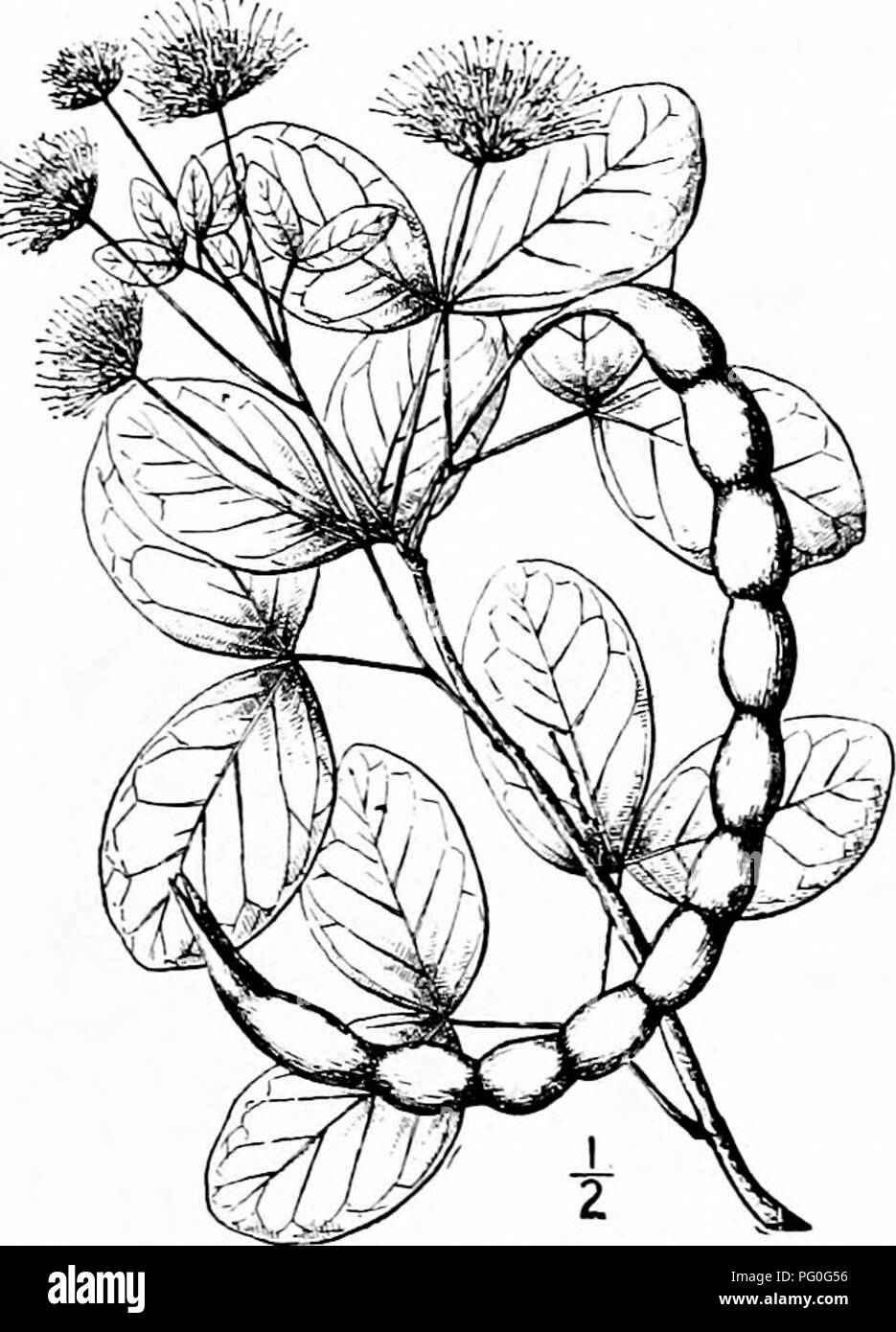 . North American trees : being descriptions and illustrations of the trees growing independently of cultivation in North America, north of Mexico and the West Indies . Trees. 5i6 The Cats-Claws 2. BLACK BEADâPithecolobium guadalupense Chapman A small unarmed tree or shrub growing in sandy or rocky soil of the Florida Keys and the Bahamas, where it attains a height of 6 meters, with a trunk diameter of 1.5 dm. The branches are irregular, forming a flattish topped, irregular head. The bark is about 5 mm. thick, shghtly fissured, red- brown internally and dark gray externally. The twigs are stout Stock Photohttps://www.alamy.com/image-license-details/?v=1https://www.alamy.com/north-american-trees-being-descriptions-and-illustrations-of-the-trees-growing-independently-of-cultivation-in-north-america-north-of-mexico-and-the-west-indies-trees-5i6-the-cats-claws-2-black-beadpithecolobium-guadalupense-chapman-a-small-unarmed-tree-or-shrub-growing-in-sandy-or-rocky-soil-of-the-florida-keys-and-the-bahamas-where-it-attains-a-height-of-6-meters-with-a-trunk-diameter-of-15-dm-the-branches-are-irregular-forming-a-flattish-topped-irregular-head-the-bark-is-about-5-mm-thick-shghtly-fissured-red-brown-internally-and-dark-gray-externally-the-twigs-are-stout-image216371602.html
. North American trees : being descriptions and illustrations of the trees growing independently of cultivation in North America, north of Mexico and the West Indies . Trees. 5i6 The Cats-Claws 2. BLACK BEADâPithecolobium guadalupense Chapman A small unarmed tree or shrub growing in sandy or rocky soil of the Florida Keys and the Bahamas, where it attains a height of 6 meters, with a trunk diameter of 1.5 dm. The branches are irregular, forming a flattish topped, irregular head. The bark is about 5 mm. thick, shghtly fissured, red- brown internally and dark gray externally. The twigs are stout Stock Photohttps://www.alamy.com/image-license-details/?v=1https://www.alamy.com/north-american-trees-being-descriptions-and-illustrations-of-the-trees-growing-independently-of-cultivation-in-north-america-north-of-mexico-and-the-west-indies-trees-5i6-the-cats-claws-2-black-beadpithecolobium-guadalupense-chapman-a-small-unarmed-tree-or-shrub-growing-in-sandy-or-rocky-soil-of-the-florida-keys-and-the-bahamas-where-it-attains-a-height-of-6-meters-with-a-trunk-diameter-of-15-dm-the-branches-are-irregular-forming-a-flattish-topped-irregular-head-the-bark-is-about-5-mm-thick-shghtly-fissured-red-brown-internally-and-dark-gray-externally-the-twigs-are-stout-image216371602.htmlRMPG0G56–. North American trees : being descriptions and illustrations of the trees growing independently of cultivation in North America, north of Mexico and the West Indies . Trees. 5i6 The Cats-Claws 2. BLACK BEADâPithecolobium guadalupense Chapman A small unarmed tree or shrub growing in sandy or rocky soil of the Florida Keys and the Bahamas, where it attains a height of 6 meters, with a trunk diameter of 1.5 dm. The branches are irregular, forming a flattish topped, irregular head. The bark is about 5 mm. thick, shghtly fissured, red- brown internally and dark gray externally. The twigs are stout
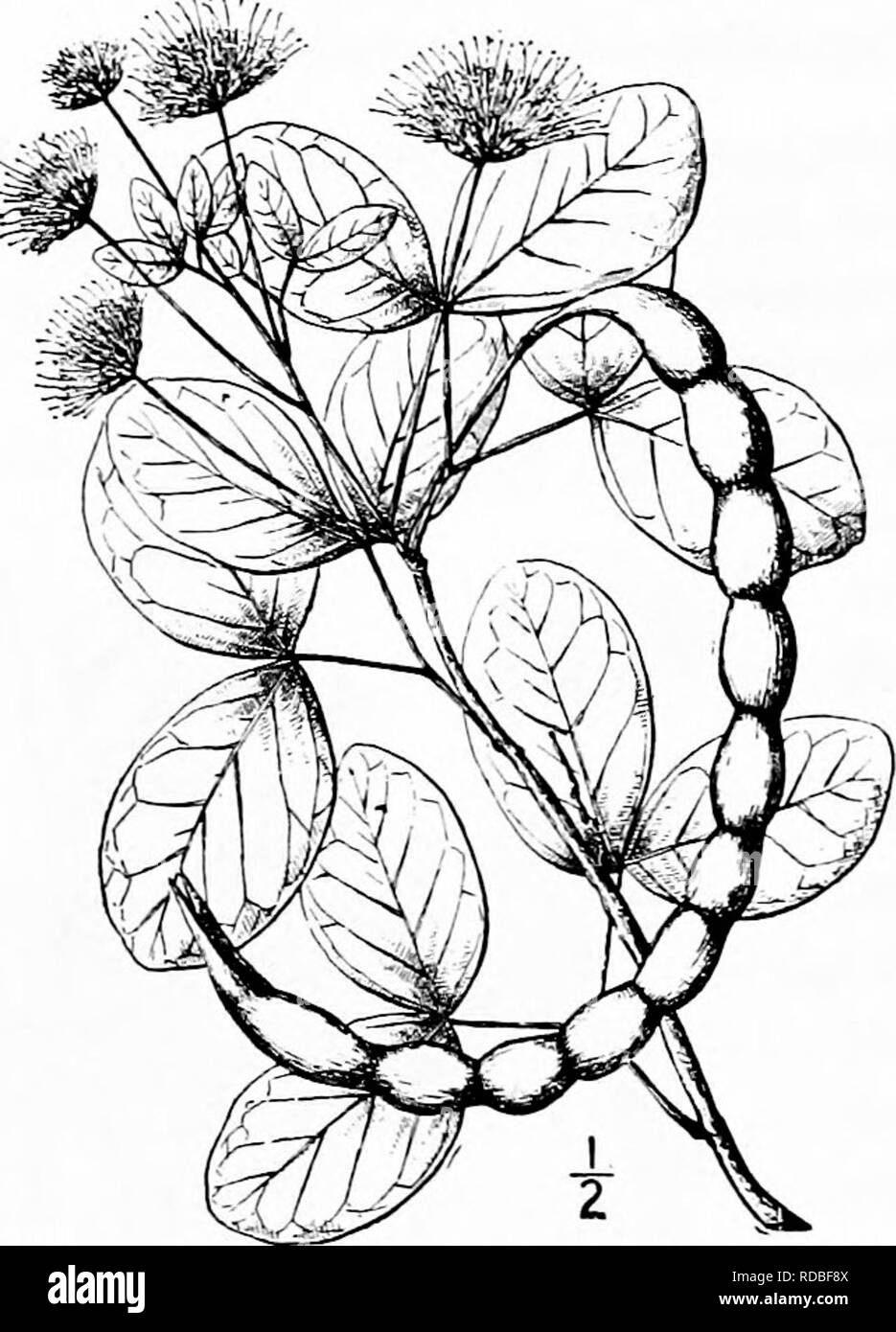 . North American trees : being descriptions and illustrations of the trees growing independently of cultivation in North America, north of Mexico and the West Indies . Trees. 5i6 The Cats-Claws 2. BLACK BEADâPithecolobium guadalupense Chapman A small unarmed tree or shrub growing in sandy or rocky soil of the Florida Keys and the Bahamas, where it attains a height of 6 meters, with a trunk diameter of 1.5 dm. The branches are irregular, forming a flattish topped, irregular head. The bark is about 5 mm. thick, shghtly fissured, red- brown internally and dark gray externally. The twigs are stout Stock Photohttps://www.alamy.com/image-license-details/?v=1https://www.alamy.com/north-american-trees-being-descriptions-and-illustrations-of-the-trees-growing-independently-of-cultivation-in-north-america-north-of-mexico-and-the-west-indies-trees-5i6-the-cats-claws-2-black-beadpithecolobium-guadalupense-chapman-a-small-unarmed-tree-or-shrub-growing-in-sandy-or-rocky-soil-of-the-florida-keys-and-the-bahamas-where-it-attains-a-height-of-6-meters-with-a-trunk-diameter-of-15-dm-the-branches-are-irregular-forming-a-flattish-topped-irregular-head-the-bark-is-about-5-mm-thick-shghtly-fissured-red-brown-internally-and-dark-gray-externally-the-twigs-are-stout-image231978794.html
. North American trees : being descriptions and illustrations of the trees growing independently of cultivation in North America, north of Mexico and the West Indies . Trees. 5i6 The Cats-Claws 2. BLACK BEADâPithecolobium guadalupense Chapman A small unarmed tree or shrub growing in sandy or rocky soil of the Florida Keys and the Bahamas, where it attains a height of 6 meters, with a trunk diameter of 1.5 dm. The branches are irregular, forming a flattish topped, irregular head. The bark is about 5 mm. thick, shghtly fissured, red- brown internally and dark gray externally. The twigs are stout Stock Photohttps://www.alamy.com/image-license-details/?v=1https://www.alamy.com/north-american-trees-being-descriptions-and-illustrations-of-the-trees-growing-independently-of-cultivation-in-north-america-north-of-mexico-and-the-west-indies-trees-5i6-the-cats-claws-2-black-beadpithecolobium-guadalupense-chapman-a-small-unarmed-tree-or-shrub-growing-in-sandy-or-rocky-soil-of-the-florida-keys-and-the-bahamas-where-it-attains-a-height-of-6-meters-with-a-trunk-diameter-of-15-dm-the-branches-are-irregular-forming-a-flattish-topped-irregular-head-the-bark-is-about-5-mm-thick-shghtly-fissured-red-brown-internally-and-dark-gray-externally-the-twigs-are-stout-image231978794.htmlRMRDBF8X–. North American trees : being descriptions and illustrations of the trees growing independently of cultivation in North America, north of Mexico and the West Indies . Trees. 5i6 The Cats-Claws 2. BLACK BEADâPithecolobium guadalupense Chapman A small unarmed tree or shrub growing in sandy or rocky soil of the Florida Keys and the Bahamas, where it attains a height of 6 meters, with a trunk diameter of 1.5 dm. The branches are irregular, forming a flattish topped, irregular head. The bark is about 5 mm. thick, shghtly fissured, red- brown internally and dark gray externally. The twigs are stout
 garden ground Stock Photohttps://www.alamy.com/image-license-details/?v=1https://www.alamy.com/stock-photo-garden-ground-144105171.html
garden ground Stock Photohttps://www.alamy.com/image-license-details/?v=1https://www.alamy.com/stock-photo-garden-ground-144105171.htmlRFJACFH7–garden ground
 . North American trees : being descriptions and illustrations of the trees growing independently of cultivation in North America, north of Mexico and the West Indies . Trees. ii8 The Junipers poor or rocky soil from Nova Scotia and New Brunswick to western Ontario and South Dakota, southward to northern Florida, Alabama, and eastern Texas. It is variously known as Red cedar, Red juniper, Savin, Cedar, and Juniper bush. The trunk is tall and straight, usually ridged, often considerably expanded at the base, and sometimes excentric. The branches are slender, more or less spreading below and asce Stock Photohttps://www.alamy.com/image-license-details/?v=1https://www.alamy.com/north-american-trees-being-descriptions-and-illustrations-of-the-trees-growing-independently-of-cultivation-in-north-america-north-of-mexico-and-the-west-indies-trees-ii8-the-junipers-poor-or-rocky-soil-from-nova-scotia-and-new-brunswick-to-western-ontario-and-south-dakota-southward-to-northern-florida-alabama-and-eastern-texas-it-is-variously-known-as-red-cedar-red-juniper-savin-cedar-and-juniper-bush-the-trunk-is-tall-and-straight-usually-ridged-often-considerably-expanded-at-the-base-and-sometimes-excentric-the-branches-are-slender-more-or-less-spreading-below-and-asce-image216392142.html
. North American trees : being descriptions and illustrations of the trees growing independently of cultivation in North America, north of Mexico and the West Indies . Trees. ii8 The Junipers poor or rocky soil from Nova Scotia and New Brunswick to western Ontario and South Dakota, southward to northern Florida, Alabama, and eastern Texas. It is variously known as Red cedar, Red juniper, Savin, Cedar, and Juniper bush. The trunk is tall and straight, usually ridged, often considerably expanded at the base, and sometimes excentric. The branches are slender, more or less spreading below and asce Stock Photohttps://www.alamy.com/image-license-details/?v=1https://www.alamy.com/north-american-trees-being-descriptions-and-illustrations-of-the-trees-growing-independently-of-cultivation-in-north-america-north-of-mexico-and-the-west-indies-trees-ii8-the-junipers-poor-or-rocky-soil-from-nova-scotia-and-new-brunswick-to-western-ontario-and-south-dakota-southward-to-northern-florida-alabama-and-eastern-texas-it-is-variously-known-as-red-cedar-red-juniper-savin-cedar-and-juniper-bush-the-trunk-is-tall-and-straight-usually-ridged-often-considerably-expanded-at-the-base-and-sometimes-excentric-the-branches-are-slender-more-or-less-spreading-below-and-asce-image216392142.htmlRMPG1EAP–. North American trees : being descriptions and illustrations of the trees growing independently of cultivation in North America, north of Mexico and the West Indies . Trees. ii8 The Junipers poor or rocky soil from Nova Scotia and New Brunswick to western Ontario and South Dakota, southward to northern Florida, Alabama, and eastern Texas. It is variously known as Red cedar, Red juniper, Savin, Cedar, and Juniper bush. The trunk is tall and straight, usually ridged, often considerably expanded at the base, and sometimes excentric. The branches are slender, more or less spreading below and asce
 . North American trees : being descriptions and illustrations of the trees growing independently of cultivation in North America, north of Mexico and the West Indies . Trees. ii8 The Junipers poor or rocky soil from Nova Scotia and New Brunswick to western Ontario and South Dakota, southward to northern Florida, Alabama, and eastern Texas. It is variously known as Red cedar, Red juniper, Savin, Cedar, and Juniper bush. The trunk is tall and straight, usually ridged, often considerably expanded at the base, and sometimes excentric. The branches are slender, more or less spreading below and asce Stock Photohttps://www.alamy.com/image-license-details/?v=1https://www.alamy.com/north-american-trees-being-descriptions-and-illustrations-of-the-trees-growing-independently-of-cultivation-in-north-america-north-of-mexico-and-the-west-indies-trees-ii8-the-junipers-poor-or-rocky-soil-from-nova-scotia-and-new-brunswick-to-western-ontario-and-south-dakota-southward-to-northern-florida-alabama-and-eastern-texas-it-is-variously-known-as-red-cedar-red-juniper-savin-cedar-and-juniper-bush-the-trunk-is-tall-and-straight-usually-ridged-often-considerably-expanded-at-the-base-and-sometimes-excentric-the-branches-are-slender-more-or-less-spreading-below-and-asce-image231980225.html
. North American trees : being descriptions and illustrations of the trees growing independently of cultivation in North America, north of Mexico and the West Indies . Trees. ii8 The Junipers poor or rocky soil from Nova Scotia and New Brunswick to western Ontario and South Dakota, southward to northern Florida, Alabama, and eastern Texas. It is variously known as Red cedar, Red juniper, Savin, Cedar, and Juniper bush. The trunk is tall and straight, usually ridged, often considerably expanded at the base, and sometimes excentric. The branches are slender, more or less spreading below and asce Stock Photohttps://www.alamy.com/image-license-details/?v=1https://www.alamy.com/north-american-trees-being-descriptions-and-illustrations-of-the-trees-growing-independently-of-cultivation-in-north-america-north-of-mexico-and-the-west-indies-trees-ii8-the-junipers-poor-or-rocky-soil-from-nova-scotia-and-new-brunswick-to-western-ontario-and-south-dakota-southward-to-northern-florida-alabama-and-eastern-texas-it-is-variously-known-as-red-cedar-red-juniper-savin-cedar-and-juniper-bush-the-trunk-is-tall-and-straight-usually-ridged-often-considerably-expanded-at-the-base-and-sometimes-excentric-the-branches-are-slender-more-or-less-spreading-below-and-asce-image231980225.htmlRMRDBH41–. North American trees : being descriptions and illustrations of the trees growing independently of cultivation in North America, north of Mexico and the West Indies . Trees. ii8 The Junipers poor or rocky soil from Nova Scotia and New Brunswick to western Ontario and South Dakota, southward to northern Florida, Alabama, and eastern Texas. It is variously known as Red cedar, Red juniper, Savin, Cedar, and Juniper bush. The trunk is tall and straight, usually ridged, often considerably expanded at the base, and sometimes excentric. The branches are slender, more or less spreading below and asce
 garden ground Stock Photohttps://www.alamy.com/image-license-details/?v=1https://www.alamy.com/stock-photo-garden-ground-144105003.html
garden ground Stock Photohttps://www.alamy.com/image-license-details/?v=1https://www.alamy.com/stock-photo-garden-ground-144105003.htmlRFJACFB7–garden ground
 garden ground Stock Photohttps://www.alamy.com/image-license-details/?v=1https://www.alamy.com/stock-photo-garden-ground-144104997.html
garden ground Stock Photohttps://www.alamy.com/image-license-details/?v=1https://www.alamy.com/stock-photo-garden-ground-144104997.htmlRFJACFB1–garden ground
 food, aliment, pepper, spice, isolated, colour, garden, ground, soil, earth, Stock Photohttps://www.alamy.com/image-license-details/?v=1https://www.alamy.com/stock-photo-food-aliment-pepper-spice-isolated-colour-garden-ground-soil-earth-132257303.html
food, aliment, pepper, spice, isolated, colour, garden, ground, soil, earth, Stock Photohttps://www.alamy.com/image-license-details/?v=1https://www.alamy.com/stock-photo-food-aliment-pepper-spice-isolated-colour-garden-ground-soil-earth-132257303.htmlRFHK4RF3–food, aliment, pepper, spice, isolated, colour, garden, ground, soil, earth,